Last fall, I ventured down to the Titan Missile Museum with a friend who was visiting from out of town. Actually, we had gone down to Nogales, Mexico and then back up Tubac, so technically we were heading back up to Tucson when we stopped there. Semantics aside, here’s my summary of the visit.
Titan Missile Museum Overview
The Titan Missile Museum is in Green Valley, Arizona, about 20 miles south of Tucson just off I-19.
I’ve been to it several times now; once when I was a student at nearby University of Arizona, and a couple times since I’ve returned to Tucson. The last two visits were with engineer friends who were visiting from out of town. Although I know the basic gist of the museum by now, I still learn new things each time I visit.
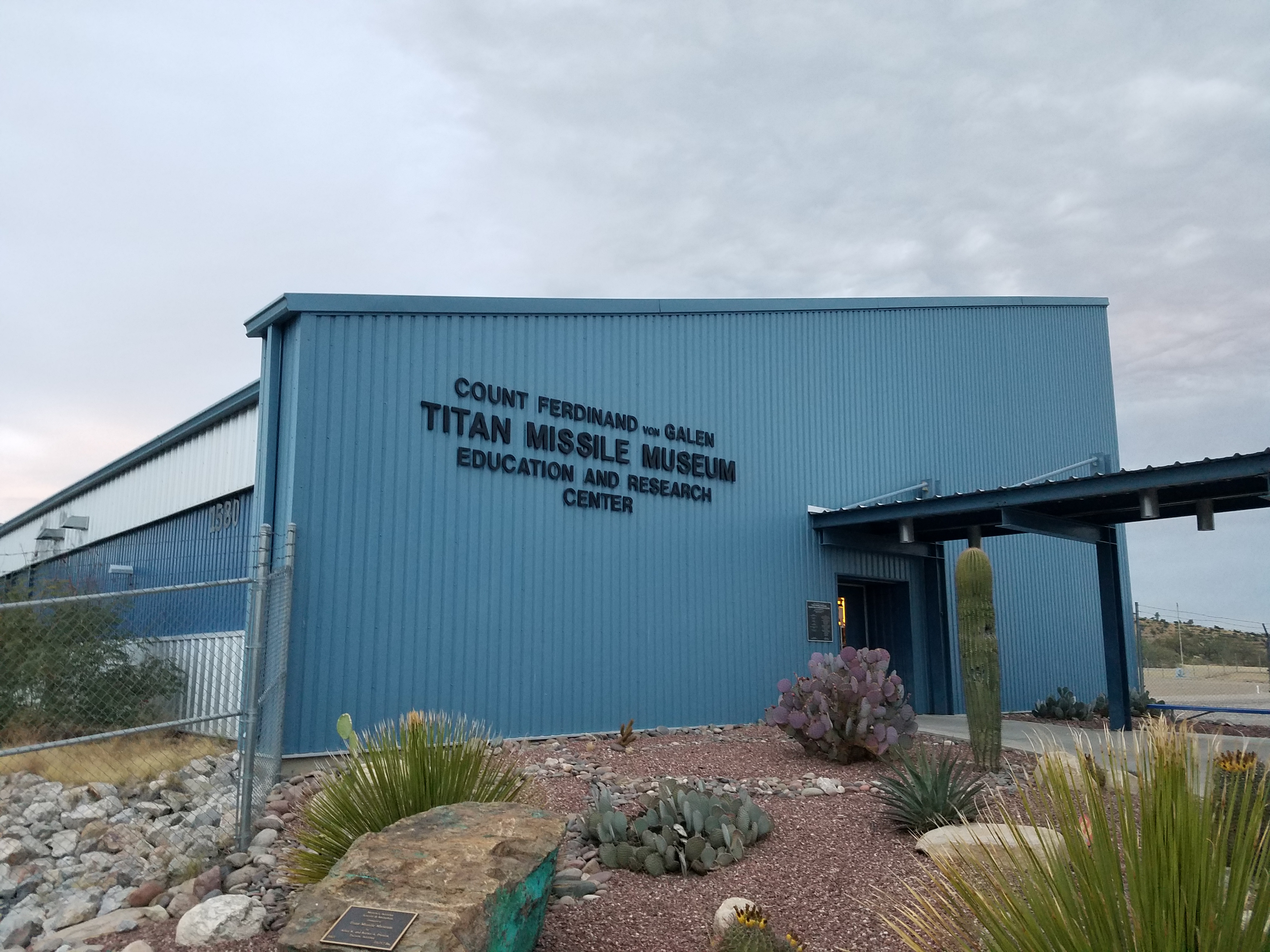
Titan Missile Museum education and research center.
The only way to actually go into the missile site is to go on guided tour, most of which are an hour long. While I usually loathe guided tours, in this case it certainly makes sense for safety reasons. Plus, all the guides I’ve had have been extremely knowledgable about the history of the Titan II missile sites. In fact, many are former Titan II site crew.
Video and Top Side
Tours start on the hour every hour (and on the half-hour on peak days) and we got there just in time to catch the last tour of the day. The tour kicks off with a quick video detailing the history of the Cold War and the role Titan II missiles played as deterrents. The video is certainly a bit one-sided in its view of history, but this is to be expected. It didn’t cross the boundary into egregious propaganda though as far as I was concerned.
The video explains that although this is the only one open to the public, there were a total of 54 Titan II missile sites; 18 each near Little Rock Arkansas; Wichita, Kansas; and Tucson, Arizona. They were active from 1963 to 1987. The map below shows the locations of the Tucson sites:
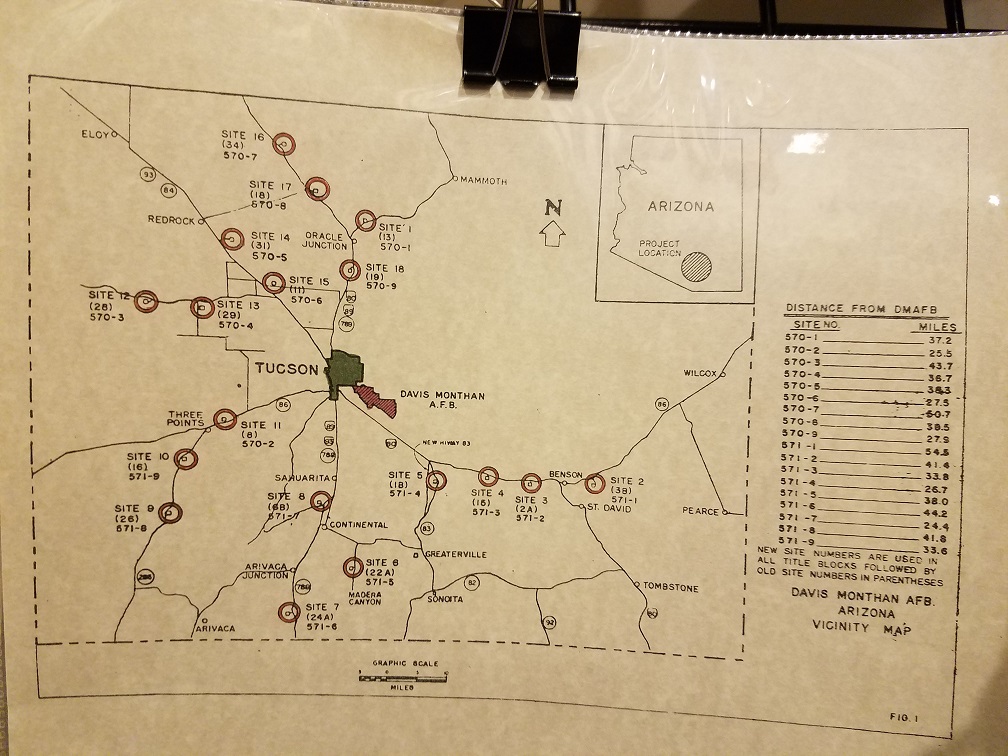
Map showing the 18 Titan II missile sites around Tucson. The museum is at site 8.
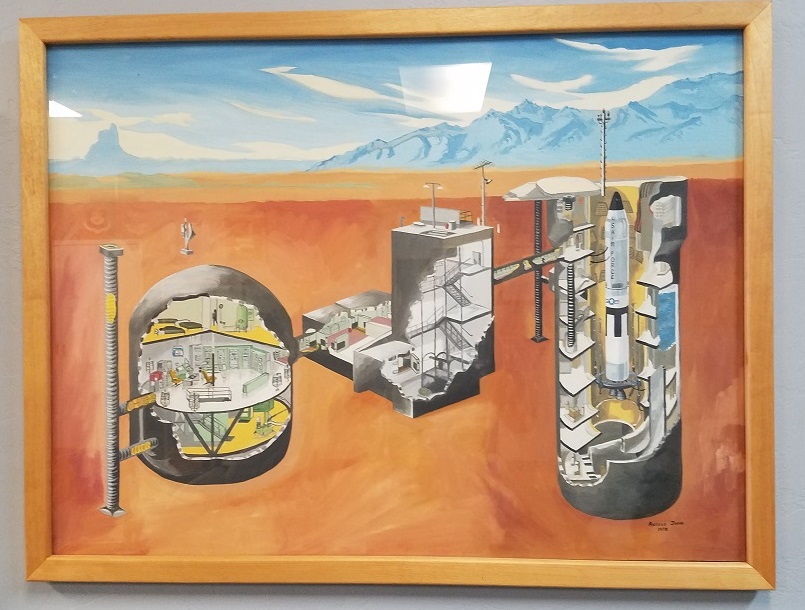
Illustration of the missile sites’ layout (the same was used for all 54 Titan II missile sites).
Following the video and a couple reminders to watch your head (tall people also had to don a hard hat) the group ventured outside to the Top Side area of the site. This is, as its name suggests, the part above ground.
There’s really not much above ground, although there’s more now than there would have been when the complex was active. Here’s what it looks like as you exit the main museum building:
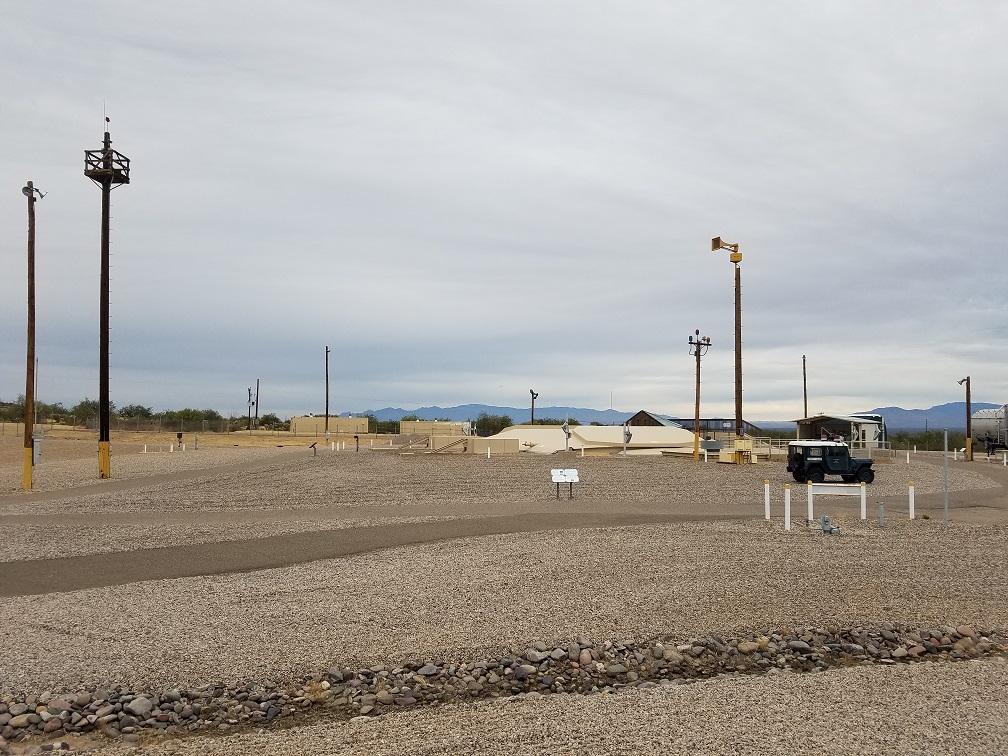
Top Side.
Nevertheless, there are a few items of interest here. One is the fuel hardstand, where fuel was transferred to the missile fuel takes from service vehicles. Another is the AN/TPS-30 Radar Surveillance System. Its components, fondly called “tipsies” by crew members, projected radar beams around the silo/launch duct opening. If anything broke the beams, the system would notify the crew of possible intruders.
There’s also a stage 1 engine, a stage 2 engine, and a Vernier motor for visitors to inspect.
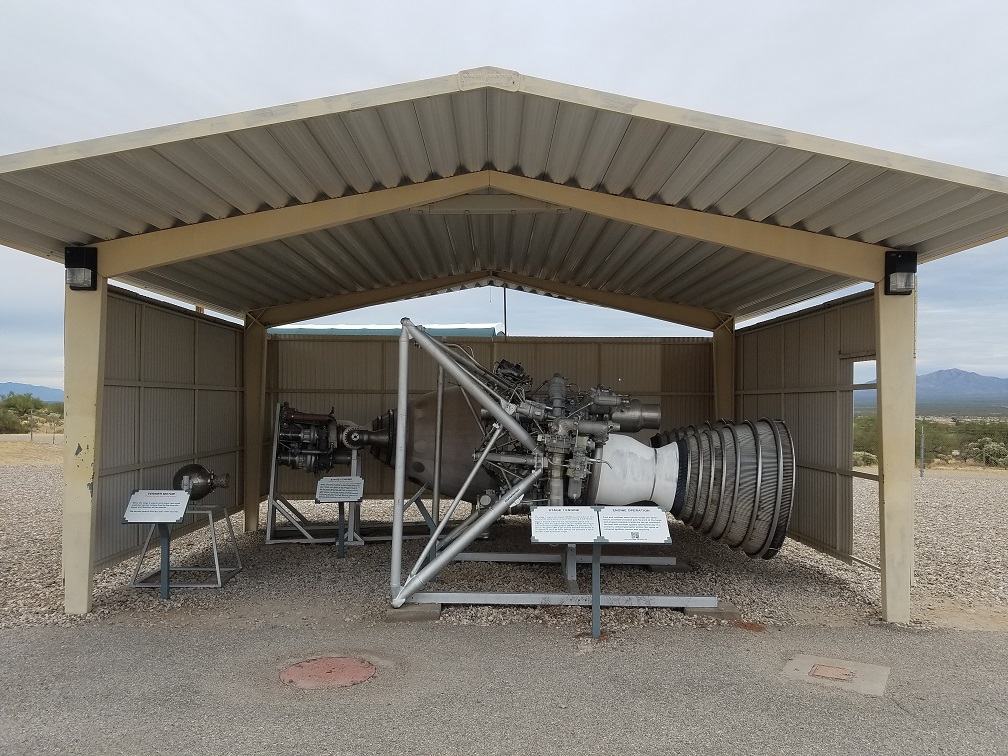
Stage 1 and stage 2 engines and Vernier motor.
The coolest part of the Top Side tour is the silo and launch duct. The whole thing is about 150 feet (46 m) deep and the silo has 8-foot thick walls. At a depth of about 30 feet, the wall thickness starts tapering down to roughly 4 feet at the bottom. Still pretty thick though!
Though it would have been closed when the site was active, the silo door is now kept halfway open, with glass covering the open side and providing the view in the photo below:

Titan II missile.
The missile itself is 103 feet tall and has a diameter of 10 feet. It rests on a ring suspended by massive springs. This system would have minimized damage to the missile if there was a nuclear explosion close by, a real concern during the Cold War.
The nuclear weapon (a 9-megaton warhead) would have been housed in the cone at the top of the missile. The big square cut in that cone proves that the missile we see now has indeed been decommissioned.
There are a few other things we saw Top Side before making our way underground: an oxidizer hardstand, radio antennas (and backups in hardened underground vaults), and an air shaft which could also be used as an emergency escape.
Titan II missile launch control center
Now that the Top Side part of the tour was over, it was time to venture down into the underground launch control center.
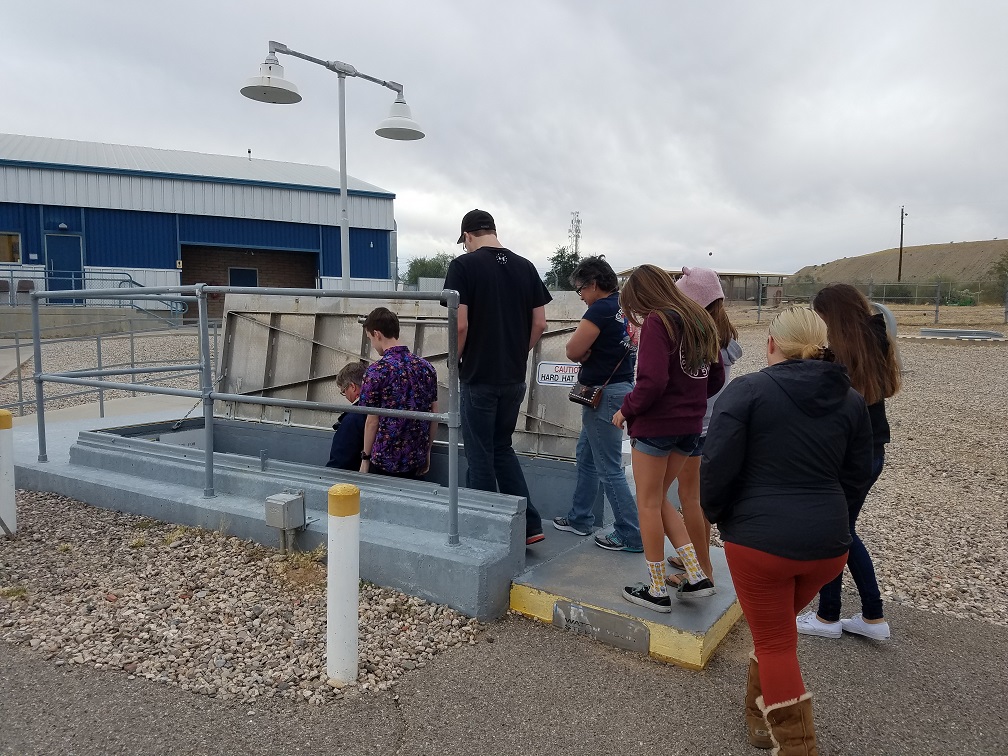
Down the hatch!
Despite all the security measures, it appears the Air Force was unable to find a good solution to a common desert problem: rattlesnakes curled up in doorways.

A common issue in the desert.
In order to access the launch control center when the site was active, crew members would have had to go through several security measures with the crew that was already inside. We just strolled in.
To get to the launch control center, you have to go down 55 steps and through an absolutely massive blast door.
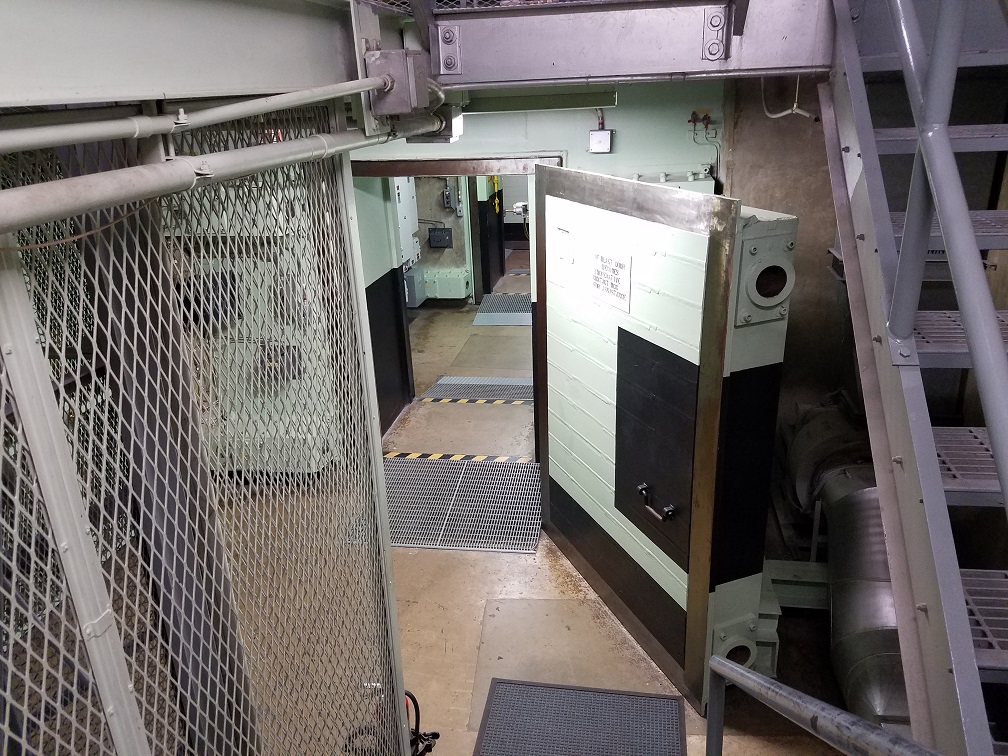
One of the massive blast doors.
Once in the launch command center, our guide filled us in on the crew’s duties, how the missile would have been launched if the signal had been given, and what daily life was like for the crew members, who served shifts of several days in groups of 4. Though we didn’t get to see the crew’s quarters, they were directly above us. It’s my understanding that on some special tours you do get the chance to go up and see them.
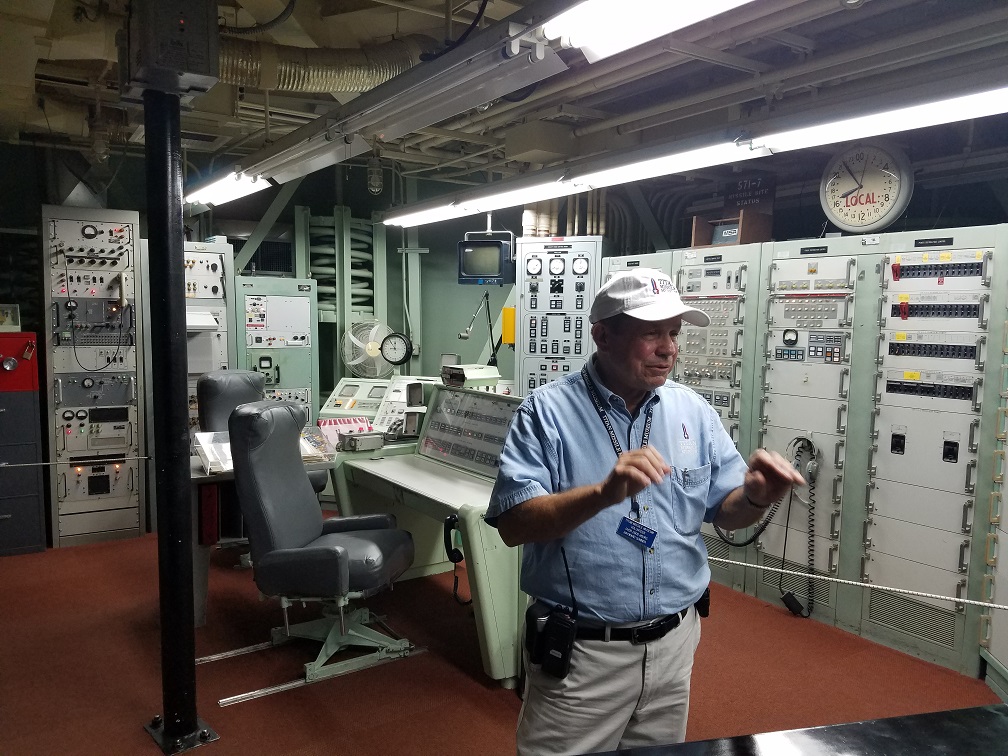
Our guide telling us about the launch control center.
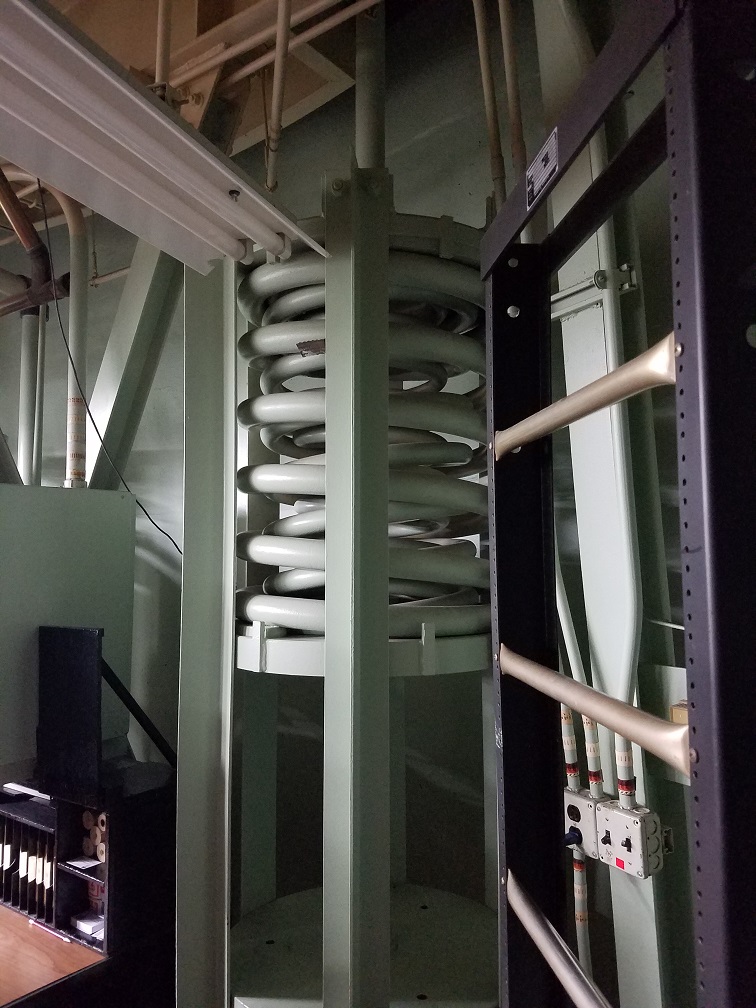
One of the huge springs that would have helped preserve the launch control center in the case of a nearby nuclear explosion.
Titan II missile silo
Having finished with the launch control center, we made our way down a long hallway (also suspended by springs) to our last stop on the tour, the missile silo.
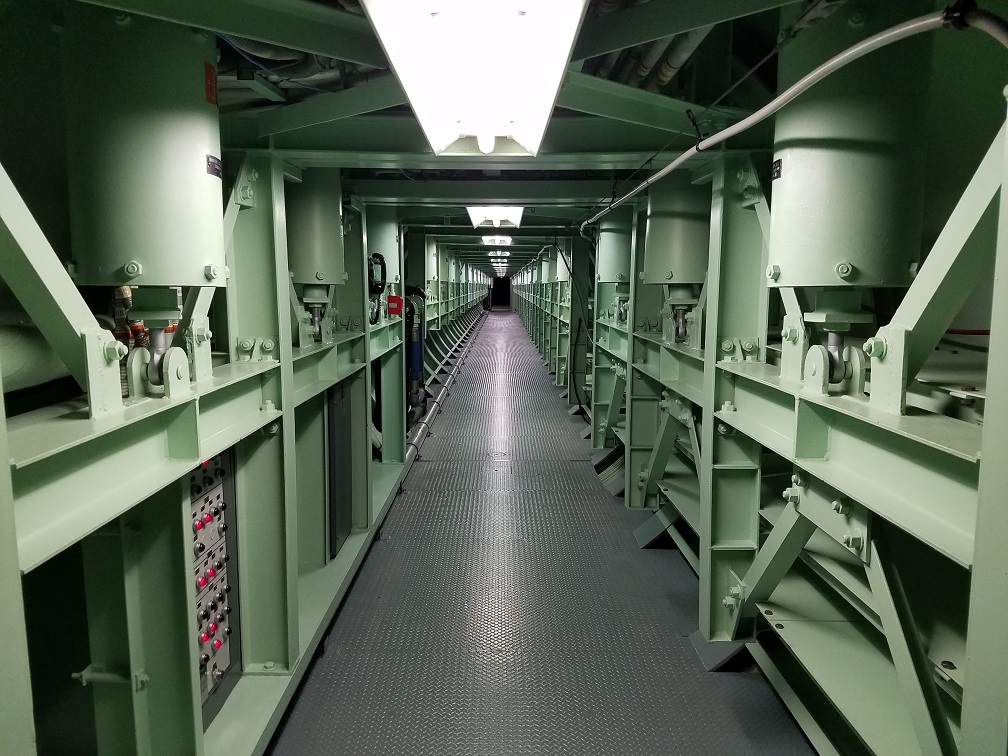
Hallway between the launch control center and silo.
Here, were were able to see the missile up close. It feels a lot bigger when you’re standing beside it!

Close-up view of the missile.
Gift shop and museum
We returned Top Side once the tour was over. Usually you get the chance to explore outside a bit more at this point but since we were the last tour of the day and it was getting dark out the guides ushered us into the main building.
In addition to the room we watched the intro video in, the main building houses a small museum and a gift shop. Here, I found this cool photo of one of the Titan II missile sites under construction:
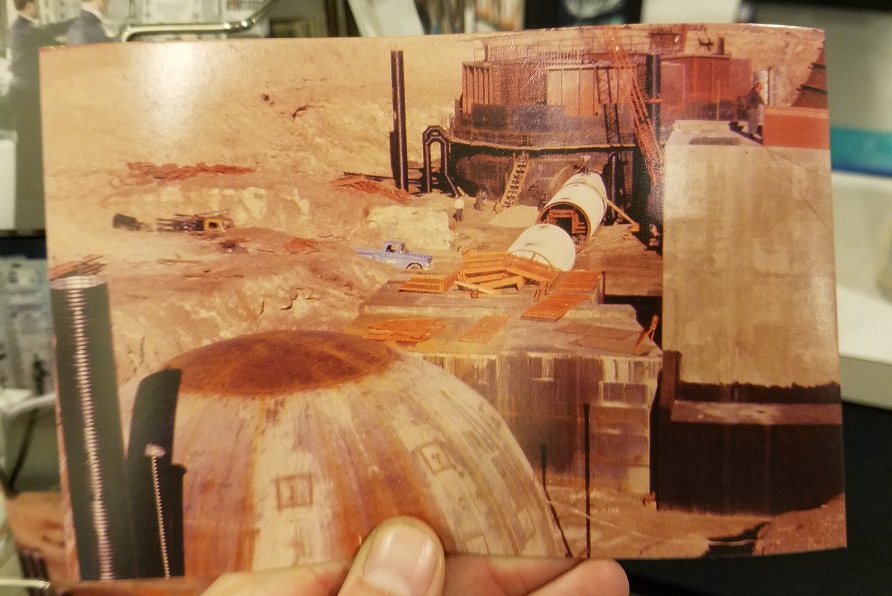
Photo of a Titan II Missile site under construction.
I also started chatting with a woman who turned out to be the Titan Missile Museum Director, Yvonne Morris. I knew from something one of the guides had mentioned that the museum director had not only served on a Titan II crew, but was one of the first women to do so (remember the time frame we’re talking about!). Not only that, she was a crew commander. Imagine having that responsibility, and add on the pressure of getting it right as a woman at a time (early 1980s) when women in “men’s jobs” already faced extra scrutiny.
What a cool lady. Having the chance to chat with her and hear her inside perspective and stories was certainly special. Special enough that I asked for a selfie! The fact that she obliged proves how cool she is.
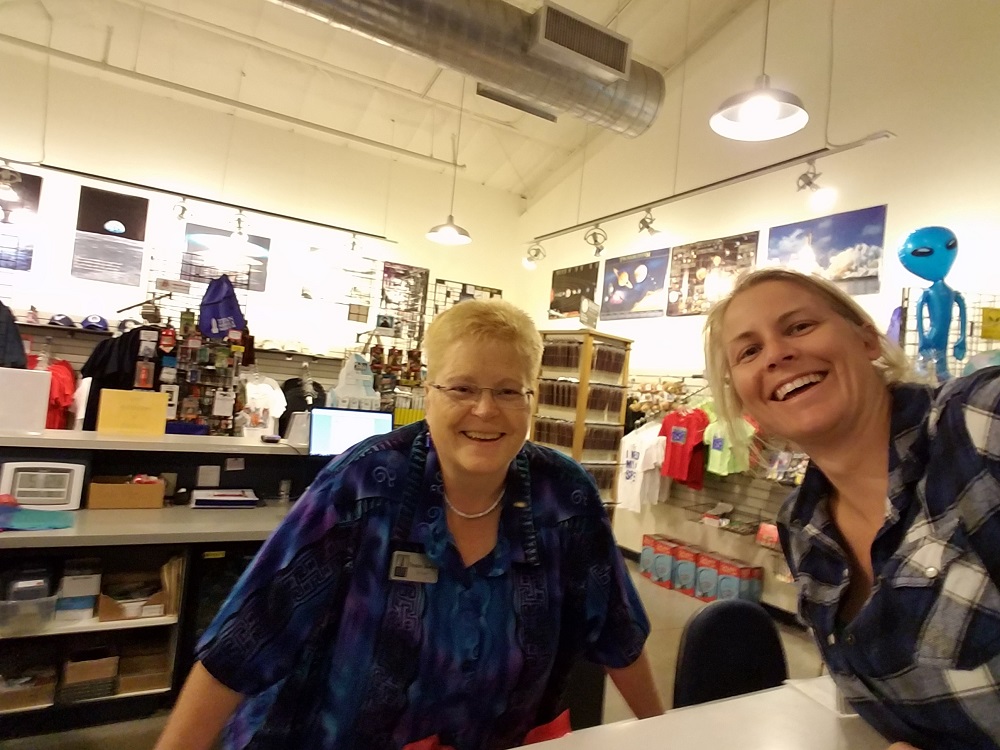
Selfie with Yvonne Morris, Director of the Titan Missile Museum and former Titan II Missile Combat Crew Commander.
Summing up my visit to the Titan Missile Museum
When you visit the Titan Missile Museum, you get to see some of the top technology of its time. Getting to meet and chat with Yvonne Morris on top of seeing all the incredible engineering made it a pretty cool trip.
If you’re a nerd like me and the friends I brought here, you’ll enjoy this museum and tour and you’ll be stunned by the technology. Non-geeks may be less wowed, but it’s still worth a visit, because the history that led to the construction of this and the 53 other Titan II sites is important for us all to know and remember. Seeing the missile in person forces one to reflect on the magnitude of nuclear war and reminds you that it is not something we should take lightly.
My Titan Missile Museum rating: ★★★★★
Share this Post
